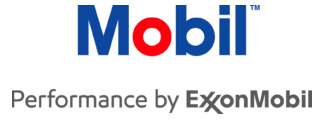How will you respond when a motor breaks down in your plant? A common course of action is to repair the unit if that costs less than replacement. As shown by the chart below, however, total costs of motor ownership depend more on a motor’s efficiency than repair or replacement costs. Typically, the energy to operate a motor represents 95% of its lifecycle cost, while purchase and repair costs represent less than 5%. Motor Decisions MatterSM (MDM) can help you make the cost-effective choice through resources like the MDM Decision Tree, which diagrams the steps in the decision-making process.
The MDM Website (www.motorsmatter.org) links you to resources like the Horsepower Bulletin [Ref. 1] that can help inform your repair-replace decisions. Developed by Advanced Energy, it breaks down the many aspects of lifecycle costing and helps users establish guidelines for repairing or replacing a motor based on size, operating hours and cost of electricity. Another useful resource, MotorMaster+ 4.0 [Ref. 2], was created by Washington State University and the U.S. Department of Energy. This comprehensive program compares the financial results of various repair-replace decisions.
Once the true lifecycle cost of a motor is understood, you can make a sound decision about whether to replace it with an energy-efficient motor or to repair using best practices.
Best Practice Motor Repair-Rewinds
Motor repair-rewinds that are improperly performed, or performed on a motor with significant damage, have the potential to degrade its nameplate efficiency. Since even a small decrease in motor efficiency can cause a marked increase in your total operating costs, it pays to make sure your repair maintains motor efficiency. Best-practice repair services can do just that. As detailed in the ANSI/EASA AR 100 standard [Ref. 3] developed by EASA, the Electrical Apparatus Service Association (www.EASA.com), and approved by ANSI (the American National Standards Institute), a 22-page document defines recommended best-practice repair-rewind by establishing guidelines for each rewinding and rebuilding step. A 2003 study by EASA and the Association of Electrical and Mechanical Trades (AEMT) found that best-practice rewind-repair procedures maintain motor efficiency within ± 0.2%—and in some cases can improve motor efficiency [Ref. 4].
When it comes to motor rewinds or repairs, work with your local utility and motor service provider to develop and implement a repair policy that makes efficiency a priority. More resources, including a 2011 Webcast, Motor Management Truths and Consequences: Understanding Electric Motor Rewinds and Efficiency [Ref. 5], are available in the “Helpful Resources” section of the MDM Website. Visit us
online to start making cost-effective motor management decisions today. MT
1.www.advancedenergy.org/md/knowledge_library/resources/Horsepower%20Bulletin.pdf
2. www1.eere.energy.gov/manufacturing/tech_deployment/software_motormaster_intl.html
3. www.easa.com/energy
4. The Effect of Repair/Rewinding On Motor Efficiency; EASA/AEMT Rewind Study and Good Practice Guide; http://www.easa.com/energy
5. www.motorsmatter.org/events/May11/MDM_EASAMotorRepairSlides.pdf; and https://vimeo.com/28827577
The Motor Decisions Matter (MDM) campaign is managed by the Consortium for Energy Efficiency (CEE), a North American nonprofit organization that promotes energy-saving products, equipment and technologies. For further information, contact MDM staff at mdminfo@cee1.org or (617) 589-3949.



